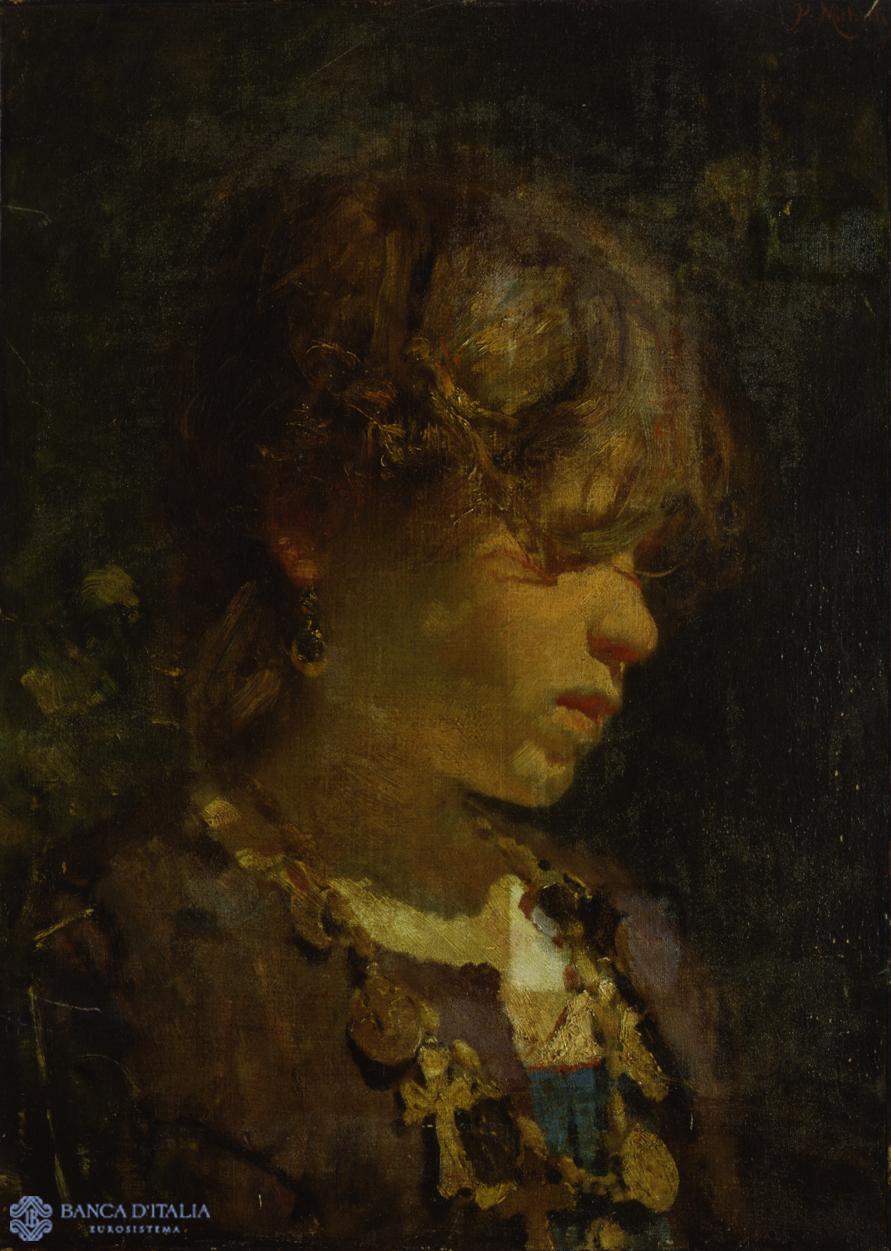Francesco Paolo Michetti was born in 1851 in Tocco Casauria (in the province of Chieti). He died in 1929 in Francavilla al Mare, the nearby town where he spent the greater part of his life. He completed his training at the Academy of Fine Arts in Naples, a formative experience. In his early work, we find an echo of the late romanticism of Morelli and the incisive verism of Palizzi as well as of the virtuosity of Dalbono’s brushstrokes. Already in 1872 and later in 1875 he exhibited at the Paris Salon where his work revealed the influence of Fortuny. Back home, he devoted himself to collecting – as if in a great pictorial register – the traditions, rites and customs of the pastoral life of the region, which he then translated, with emphasis, into mythical and ancestral visions. In 1877 at an exhibition in Naples he presented a large-format painting depicting The procession of Corpus Domini, which was later acquired by Emperor Wilhelm II of Germany. The news caused a sensation and his works became hugely popular, a success he repeated in Paris in 1878, Turin in 1880, and Milan in 1881. In 1883 another celebrated large-format religious painting followed, entitled Il Voto.
His highly spectacular and imaginative paintings inspired by works of literature made him one of the most interesting painters in Italy in the late nineteenth century. He was a very close friend of Gabriele D’Annunzio, who was a regular guest in his celebrated “Conventino” in Francavilla. The relationship between poet and painter was based on their common conception of art and a series of shared themes, helping to raise the popularity of Michetti’s art and his native Abruzzo region. The two men’s shared vision was celebrated in the painting La Figlia di Iorio (the title of one of D'Annunzio’s most famous plays) which Michetti presented at the first Venetian Biennale of 1895, scoring yet another great triumph.
Paolo Michetti
Paolo Michetti (Tocco Casauria 1851 - Francavilla al Mare 1929)
19th century AD


